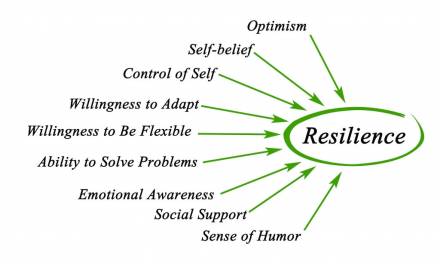Resilience – you might think that it’s every bit as important as academic aptitude, talent on the sports field or being an exceptionally skilled musician. But is it perhaps the most important learned characteristic of all?
After all, we need not look far for concerning statistics about our upcoming generations:
Three in four mental illnesses begin in childhood.
At university, 1 in 4 students say that they have mental health problems.
Depression, anxiety and conduct disorder, affect 1 in 10 young, 70% of whom did not experience the appropriate intervention.
It’s clear – anxiety, depression and mental health problems are becoming more prevalent, and more severe, amongst our youngest generations.
Yet there are also a multitude of positive reasons to equip students with resilience too – as it empowers them in persevering through setbacks, taking on challenges and overcoming adversity to achieve their goals.
Schools have a valuable role to play in building their students’ resilience and safeguarding their wellbeing not just for their school years, but well into later life.
Here’s how you could and should build your students’ resilience:
1. Build positive relationships
Study after study demonstrates that relational skills, alongside effective classroom management, can motivate students to persevere through academic obstacles.
Just one positive relationship is all it can take to forever alter the trajectory of even the most ‘at risk’ student – just one adult who communicates that they care, who gets through to a student and who is trusted.
2. Teach social and emotional skills – entwine them into every subject
Emotional and academic resilience isn’t just essential for mental and physical wellbeing, but can also directly impact the academic performance of students.
In one meta-study, Durlak and Weissberg et al (2011) demonstrated that schools with social and emotional learning (SEL) programmes achieved better results across the board than those that did not.
A curriculum of a SEL program should be formed from five key subjects:
- self-awareness
- self-management
- social awareness
- relationship skills
- responsible decision-making
3. Cultivate positive emotions
A positive learning environment is one in which students feel as though they have a voice, are free to choose and where they feel both physically and emotionally safe.
Students who feel a sense of pride in belonging to a school enjoy better self-esteem, health and academic outcomes (Developing Positive Relationships in Schools ; Roffey, 2012).
4. Create a sense of meaning and purpose
When students assist their peers and wider community they gain a deeper meaning beyond their still relatively small world.
By contributing to the wellbeing to others, they themselves improve their own well-being.
5. Recognise student strengths
For years the educational system has perhaps been upside down – focusing on ‘fixing’ students who ‘underperform’. In contrast to concentrating on students’ strengths and how they can be improved.
By switching from one to the other, both self-worth and a positive mind-set can be established.









